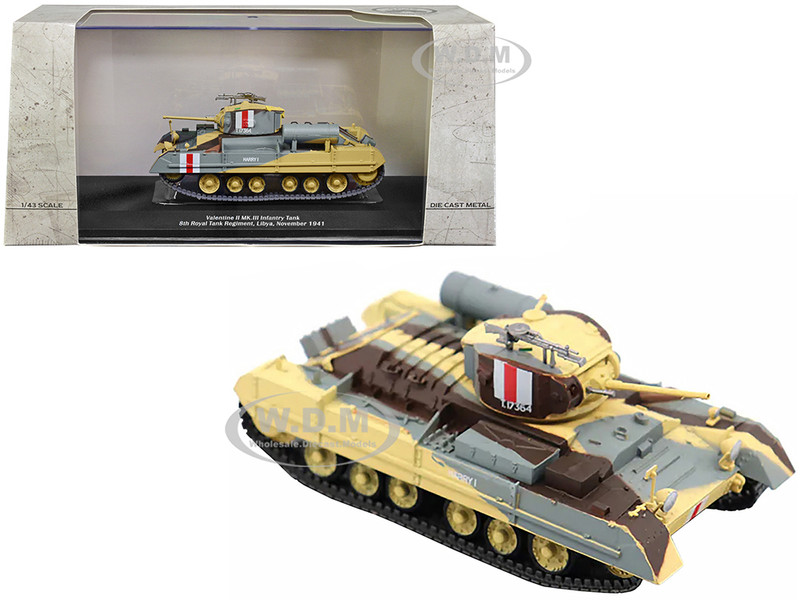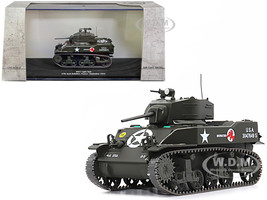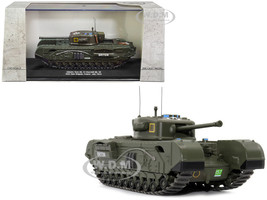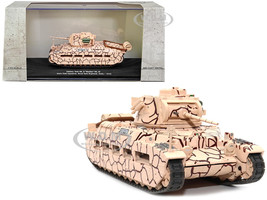- Home
- Military Models
- "Valentine MK.II" Infantry Tank MK.III "Harry I" "UK 8th Royal Tank Regiment, Libya, November 1941" 1/43 Diecast Model by AFVs of WWII
"Valentine MK.II" Infantry Tank MK.III "Harry I" "UK 8th Royal Tank Regiment, Libya, November 1941" 1/43 Diecast Model by AFVs of WWII
Product Description
- Brand new 1/43 scale diecast model of "Valentine MK.II" Infantry Tank MK.III "Harry I" "UK 8th Royal Tank Regiment, Libya, November 1941" die cast model by AFVs of WWII.
- Brand new box.
- Detailed exterior.
- True-to-scale detail.
- Officially licensed product.
- Comes in plastic display showcase.
- This model does not have any openings.
- Manufacturer's original unopened packaging.
- Made of diecast metal with some plastic parts.
- Dimensions approximately L-5.25, W-2.25, H-2.5 inches.
- Diecast metal and plastic construction for durability and a heavy, realistic feel.
- Pad printed markings and placards that won't fade or peel like decals for long-lasting.
- High-quality markings Include a protective display case to keep the model in pristine condition.
- It is a highly detailed and accurate model, perfect for collectors and enthusiasts of military history.
- Painted, fitted, non-moving tracks on detailed non-rotating wheels for a detailed and accurate appearance.
- Realistic panel lines, antennas, access panels, and surface details for an authentic representation of the real-life tank.
HISTORY ASPECTS:
The Infantry Tank, Mk III, Valentine was an infantry tank produced in the United Kingdom during World War II. More than 8,000 of the type were produced in eleven marks, plus various specialized variants, accounting for approximately a quarter of wartime British tank production. The many variants included riveted and welded construction, petrol and diesel engines and a progressive increase in armament. It was supplied in large numbers to the USSR and built under license in Canada. It was used extensively by the British in the North African campaign. Developed by Vickers, it proved to be both strong and reliable, which was unusual for British tanks of the period.
 Loading... Please wait...
Loading... Please wait...














